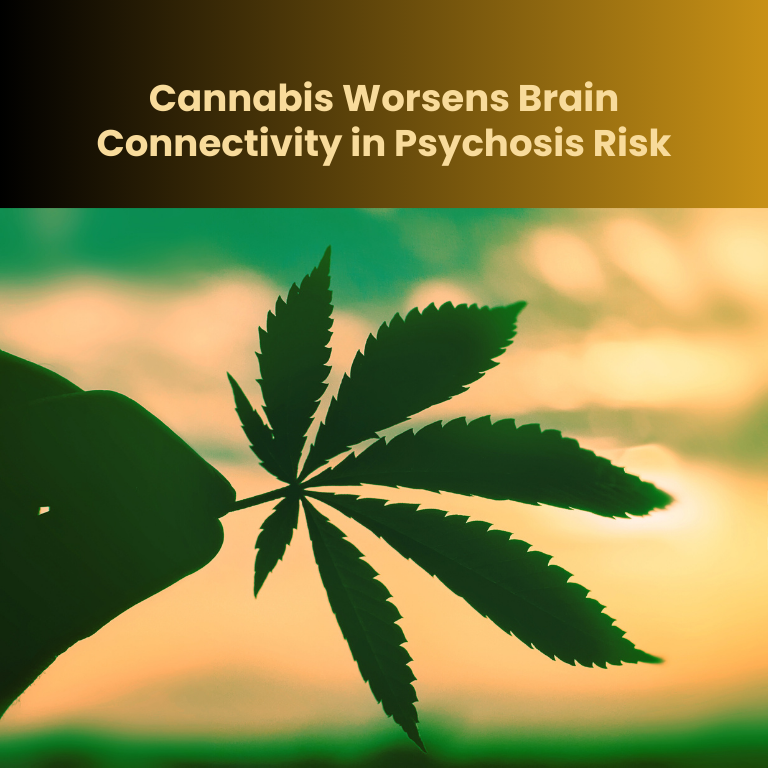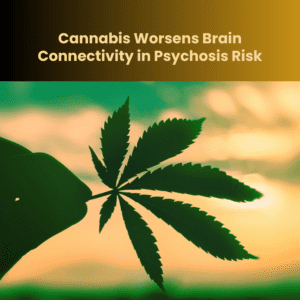Cannabis Worsens Brain Connectivity in Psychosis Risk

Cannabis Use Worsens Brain Connectivity Deficits in Young Adults at Risk of Psychosis
New research has uncovered that young adults at risk of psychosis exhibit reduced synaptic density, a critical brain connectivity deficit that cannabis use appears to exacerbate. The findings offer valuable insights into the progression of psychosis and may open doors to more targeted treatments addressing symptoms poorly managed by current medications.
Understanding Synaptic Density and Psychosis Risk
Synaptic density refers to the number of connections between neurons, which are essential for effective brain communication. Reduced synaptic density has been linked to social withdrawal and motivational deficits, hallmark symptoms of psychosis. This latest study provides the first real-time measurement of structural brain changes in individuals at high risk of developing the condition.
The researchers discovered a marked reduction in synaptic density among young adults with a heightened risk of psychosis when compared to a healthy control group. These changes were particularly tied to disruptions in synaptic pruning, a natural developmental process where the brain refines and strengthens critical connections.
Cannabis Use and Synaptic Pruning
The study revealed that cannabis use disrupts the synaptic pruning process, compounding connectivity deficits in vulnerable individuals. Synaptic pruning typically occurs during adolescence and early adulthood, playing a crucial role in brain maturation and development. When this process is interrupted, it can leave the brain less equipped to manage complex functions like social interactions and motivation.
While not every cannabis user develops psychosis, the study suggests that individuals at risk may face significantly higher vulnerability due to the drug’s interference with this key developmental stage.
Advanced Brain Imaging Sheds Light
The research employed cutting-edge brain scanning techniques to measure synaptic density and track changes in individuals aged 16 to 30. This cohort included both individuals with recent psychotic symptoms and those identified as high risk.
The study, published in JAMA Psychiatry, underscores the importance of advanced imaging technologies in uncovering the biological underpinnings of psychosis. By capturing these changes in real time, researchers can better understand how psychosis develops and progresses, enabling more precise interventions.
Symptoms Beyond Hallucinations
One of the most critical aspects of the study is its focus on symptoms that current medications fail to address. Existing treatments for psychosis predominantly target hallucinations and delusions, leaving social withdrawal, lack of motivation, and functional deficits largely untreated.
Social and motivational deficits can severely impact an individual’s ability to maintain relationships, succeed at work or school, and manage daily responsibilities. These symptoms are often more debilitating than hallucinations, making it imperative to develop therapies that specifically target these challenges.
Potential for New Therapies
The study’s findings could pave the way for innovative treatments that enhance synaptic density, thereby improving social functioning and overall quality of life for individuals at risk of psychosis. By targeting the structural brain deficits identified in this research, future therapies may provide relief for symptoms that have long been neglected in traditional psychosis treatment plans.
Implications for Early Intervention
One promising avenue for future research involves using synaptic density measurements as a predictive tool. By identifying individuals likely to develop psychosis early, interventions can be implemented before symptoms worsen. This proactive approach could transform how psychosis is managed, shifting the focus from treatment to prevention.
Early intervention strategies informed by these findings may include behavioral therapies, lifestyle modifications, or pharmaceutical treatments designed to preserve or enhance synaptic density during critical developmental periods.
A Changing Paradigm in Psychosis Research
This study highlights the evolving understanding of psychosis as more than just a collection of psychological symptoms. By focusing on the biological and neurological changes underpinning the condition, researchers can develop more comprehensive treatment strategies that address the full spectrum of symptoms.
Moreover, the role of cannabis in exacerbating synaptic deficits underscores the need for public health initiatives to educate at-risk populations about the potential risks associated with cannabis use. With cannabis legalization expanding globally, such efforts are more critical than ever.
Next Steps in Research
The study’s authors emphasize the importance of continued investigation into the relationship between synaptic density and psychosis. Future research will focus on understanding whether these brain changes can reliably predict the onset of psychosis.
Additionally, the team plans to explore therapeutic approaches that may reverse or mitigate synaptic density deficits, offering hope for improved outcomes for those at risk. By leveraging the insights gained from this groundbreaking study, researchers aim to refine treatment protocols and enhance early detection methods.
Broader Implications for Mental Health Treatment
The implications of this research extend beyond psychosis, offering valuable insights into other mental health conditions characterized by social withdrawal and motivational challenges. By targeting the biological roots of these symptoms, the findings could inspire new approaches to treating a range of psychiatric disorders.
As science continues to uncover the intricate connections between brain structure and mental health, the potential for personalized and effective treatments becomes increasingly attainable.
The discovery of reduced synaptic density in young adults at risk of psychosis, along with the role of cannabis in exacerbating these deficits, marks a significant advancement in understanding the biological mechanisms underlying the condition. With the aid of advanced brain imaging and a renewed focus on previously overlooked symptoms, this research offers a path forward for developing more effective, targeted treatments.
As researchers delve deeper into the complexities of brain connectivity and its impact on mental health, the hope is that these efforts will lead to earlier interventions and better outcomes for individuals at risk of psychosis and beyond.
Stay informed about the latest cannabis industry developments with Cannabis Risk Manager.











